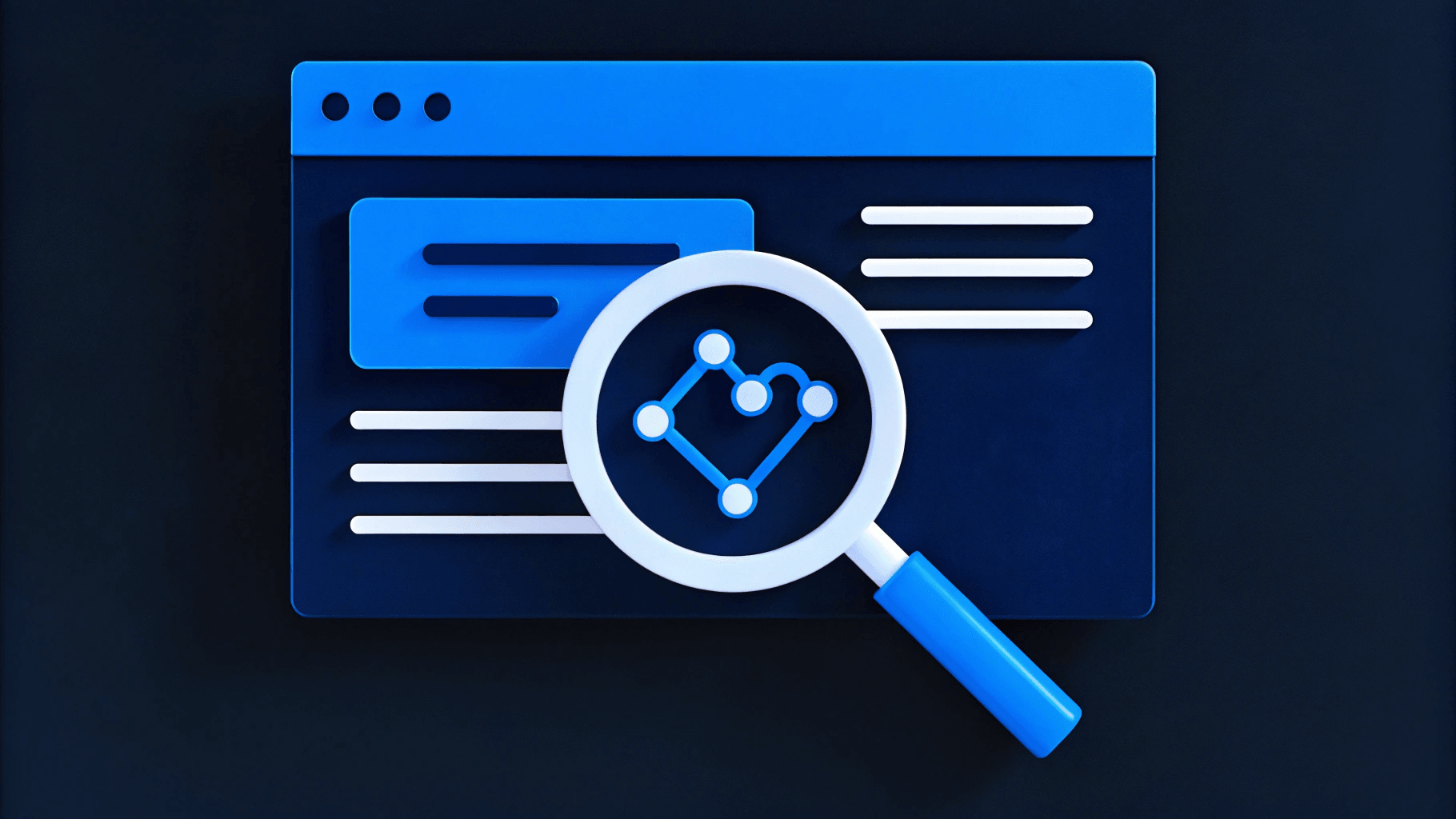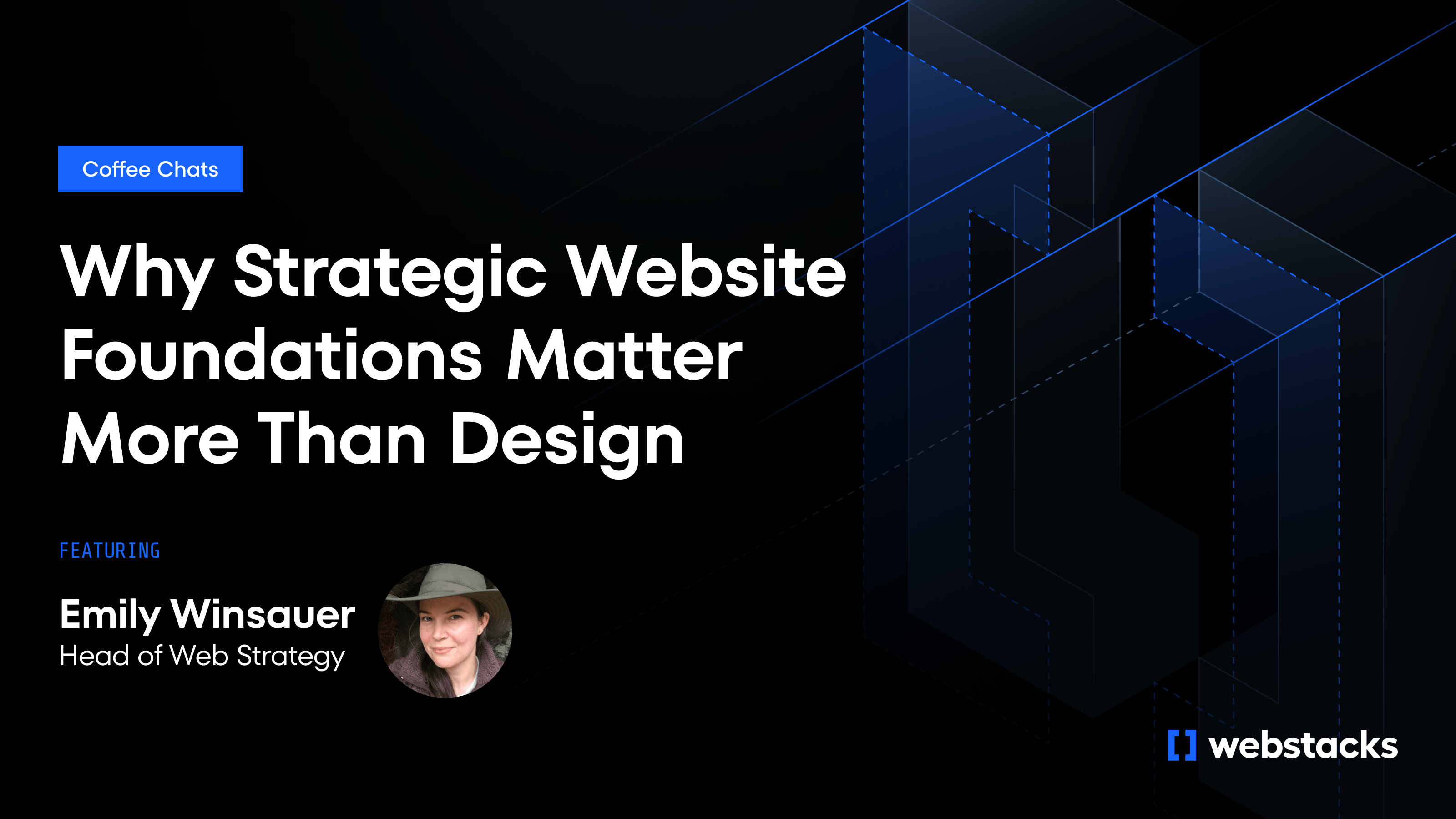Brand asset management (BAM) is how you keep your brand consistent across every channel. It’s the system for organizing logos, fonts, messaging, and other assets so your team can use them correctly and efficiently.
With more platforms and content than ever, staying consistent is a real challenge. But that consistency builds trust and makes your branding recognizable; two things that matter in every market.
At Webstacks, we've seen how proper BAM becomes a powerful tool for B2B tech companies. Since we’ve built many marketing websites, we know how strategic brand asset management creates experiences that both connect with audiences and deliver real business results.

Why Is Brand Asset Management Important in B2B?
The B2B buying journey is a maze, not a straight line. Most B2B purchases involve 6-10 decision-makers, each experiencing your brand differently. This complexity demands consistency at every turn.
B2B marketers must also juggle a fragmented channel ecosystem over digital platforms, events, sales materials, and partner networks. Each requires tailored content that still maintains brand integrity. Without good brand asset management systems, this becomes practically impossible.
In regulated industries like finance, healthcare, and technology, strict rules govern how information appears and circulates. Brand asset management ensures all assets meet compliance requirements, reduces legal risks, and builds trust with cautious B2B customers.
Then there's the trust factor. B2B relationships develop over time through multiple interactions. Brand inconsistencies quickly erode this hard-earned trust, directly hitting your revenue.
5 Steps to Improve Your Brand Asset Management
To build a brand asset management system, follow these steps:
1. Audit Existing Brand Assets
Create a full inventory of logos, images, fonts, and brand documents. Group them by type and use case. Look for anything outdated, inconsistent, or missing. This gives you a clear picture of what needs fixing or updating.
2. Develop Brand Guidelines
Document how your brand should look and sound. Include logo usage rules, color codes, fonts, imagery style, and voice and tone standards. Make sure the guidelines are easy to follow and easy to find.
Learn more: How to Build a Brand Style Guide the Webstacks Way
3. Choose the Right Tools
The tools you use for brand asset management can make or break your system. You need a platform that centralizes assets, keeps them up to date, and makes them easy to find and use across your team.
At minimum, look for tools that offer:
- Centralized storage with folders or tagging systems
- Fast, intuitive searchVersion control so teams always work with the latest filesRole-based permissions
- Integration with design, CMS, and marketing tools
- Easy sharing with internal teams and external partners
Here are a few platforms worth considering:
- Bynder: Built specifically for brand asset management. Offers advanced metadata tagging, brand guidelines hosting, and integrations with tools like Figma, WordPress, and Salesforce.
- Frontify: Popular with design-forward teams. Combines a brand guidelines hub with asset management, collaboration tools, and a solid UI.
- Brandfolder: Great for enterprise teams. Features include usage analytics, AI-powered search, and advanced permissions.
- Figma + FigJam: If you're already working in Figma, its built-in libraries and component systems can double as lightweight BAM for design teams.
- Google Drive + Airtable (or Notion): For startups or lean teams, an organized Google Drive paired with Airtable or Notion for indexing and documentation can work—though you'll miss out on versioning and deeper integration features.
Whichever tool you choose, make sure it supports your workflow.
4. Implement Access Controls
Not everyone needs full access. Assign roles, set permissions, and define approval workflows so teams can collaborate without risking brand consistency. Make it easy to share assets securely with external partners
5. Regularly Update and Maintain Brand Assets
Review and update your assets regularly. Assign someone to manage changes and remove outdated files. This applies to everything, including website content, documents, and design files.

How Brand Asset Management Supports Real Work
BAM directly supports high-stakes work like marketing campaigns and product launches. Here's how it shows up in practice:
Marketing Campaigns
Running campaigns across channels means juggling ads, emails, landing pages, and social posts, all with tight deadlines and distributed teams. Without a central system, teams waste time digging through old folders and outdated decks.
With BAM, all assets live in one place. Everyone works from the same approved files, which cuts down on back-and-forth and avoids brand mistakes. Built-in analytics also help you track which assets perform well, so future campaigns rely on data.
Product Launches
Launches move fast. Every detail (product pages, press kits, internal decks, email sequences) needs to align. A BAM system ensures that teams use the right versions of logos, specs, and messaging at every stage.
Version control prevents outdated assets from slipping through. Permissions limit access until materials are ready to go live, reducing the risk of leaks or early announcements. The result is a smoother launch and a consistent brand presence.
Webstacks' Approach to Brand Asset Management
At Webstacks, we see brand asset management as both operational and visual. As a leading design system agency, we build systems that work across all your digital platforms.
Our approach is built on modular systems that give you more than just templates. We create component-based design systems and content models that let your team scale efficiently, mixing and reusing elements across touchpoints.
We've refined our approach through years working with leading B2B tech companies. Our methodology centers on creating marketing websites that adapt as your brand evolves, using a composable architecture that gives marketing teams more autonomy.
Our approach combines design, development, and strategy. This transforms your website from a static property into an evolving system that consistently represents your brand while reducing bottlenecks.
Our work with enterprise clients like ServiceTitan has sharpened our ability to handle complex brand ecosystems at scale. By partnering with marketing teams as an extension of their capabilities, we deliver flexible solutions that grow with your brand, and support consistent experiences.
Strengthen Your Brand with Better Asset Management
Brand asset management isn’t just about staying organized. It’s how you protect your brand, move faster, and deliver a consistent experience.
Take a look at your current system. Can your team find what they need without digging? Are your assets consistent across campaigns, channels, and teams? If not, there’s room to improve.
Upgrading your BAM setup makes it easier to scale, keeps your messaging aligned, and helps your brand show up the right way, every time.





